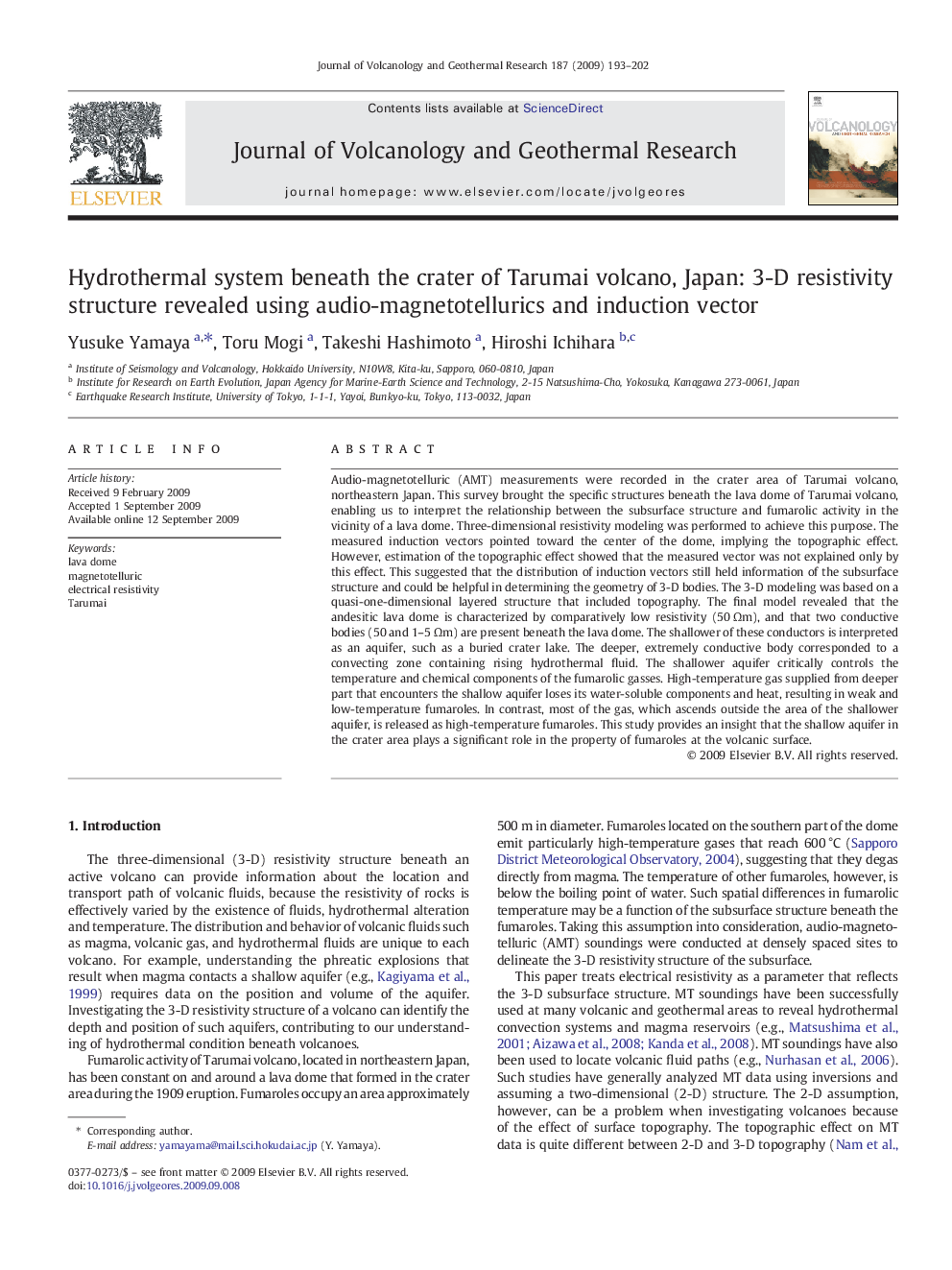| کد مقاله | کد نشریه | سال انتشار | مقاله انگلیسی | نسخه تمام متن |
|---|---|---|---|---|
| 4714144 | 1638429 | 2009 | 10 صفحه PDF | دانلود رایگان |

Audio-magnetotelluric (AMT) measurements were recorded in the crater area of Tarumai volcano, northeastern Japan. This survey brought the specific structures beneath the lava dome of Tarumai volcano, enabling us to interpret the relationship between the subsurface structure and fumarolic activity in the vicinity of a lava dome. Three-dimensional resistivity modeling was performed to achieve this purpose. The measured induction vectors pointed toward the center of the dome, implying the topographic effect. However, estimation of the topographic effect showed that the measured vector was not explained only by this effect. This suggested that the distribution of induction vectors still held information of the subsurface structure and could be helpful in determining the geometry of 3-D bodies. The 3-D modeling was based on a quasi-one-dimensional layered structure that included topography. The final model revealed that the andesitic lava dome is characterized by comparatively low resistivity (50 Ωm), and that two conductive bodies (50 and 1–5 Ωm) are present beneath the lava dome. The shallower of these conductors is interpreted as an aquifer, such as a buried crater lake. The deeper, extremely conductive body corresponded to a convecting zone containing rising hydrothermal fluid. The shallower aquifer critically controls the temperature and chemical components of the fumarolic gasses. High-temperature gas supplied from deeper part that encounters the shallow aquifer loses its water-soluble components and heat, resulting in weak and low-temperature fumaroles. In contrast, most of the gas, which ascends outside the area of the shallower aquifer, is released as high-temperature fumaroles. This study provides an insight that the shallow aquifer in the crater area plays a significant role in the property of fumaroles at the volcanic surface.
Journal: Journal of Volcanology and Geothermal Research - Volume 187, Issues 3–4, 10 November 2009, Pages 193–202